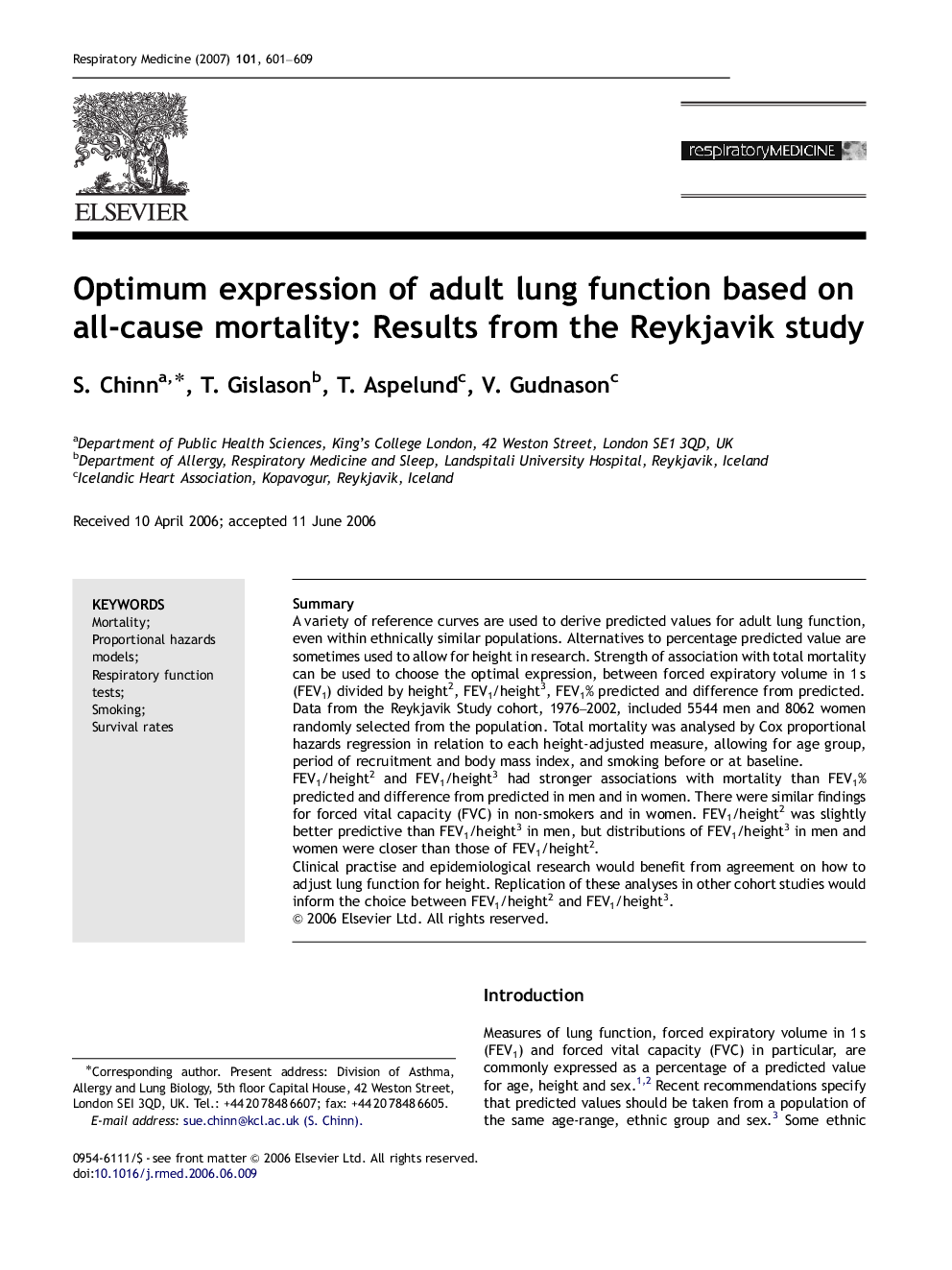| Article ID | Journal | Published Year | Pages | File Type |
|---|---|---|---|---|
| 4211756 | Respiratory Medicine | 2007 | 9 Pages |
SummaryA variety of reference curves are used to derive predicted values for adult lung function, even within ethnically similar populations. Alternatives to percentage predicted value are sometimes used to allow for height in research. Strength of association with total mortality can be used to choose the optimal expression, between forced expiratory volume in 1 s (FEV1) divided by height2, FEV1/height3, FEV1% predicted and difference from predicted.Data from the Reykjavik Study cohort, 1976–2002, included 5544 men and 8062 women randomly selected from the population. Total mortality was analysed by Cox proportional hazards regression in relation to each height-adjusted measure, allowing for age group, period of recruitment and body mass index, and smoking before or at baseline.FEV1/height2 and FEV1/height3 had stronger associations with mortality than FEV1% predicted and difference from predicted in men and in women. There were similar findings for forced vital capacity (FVC) in non-smokers and in women. FEV1/height2 was slightly better predictive than FEV1/height3 in men, but distributions of FEV1/height3 in men and women were closer than those of FEV1/height2.Clinical practise and epidemiological research would benefit from agreement on how to adjust lung function for height. Replication of these analyses in other cohort studies would inform the choice between FEV1/height2 and FEV1/height3.
